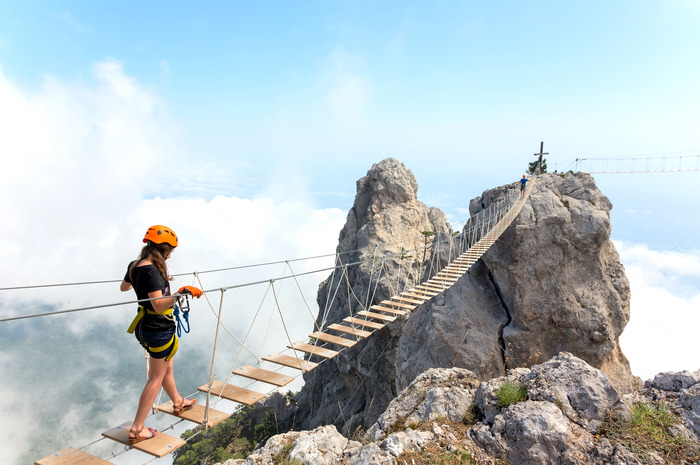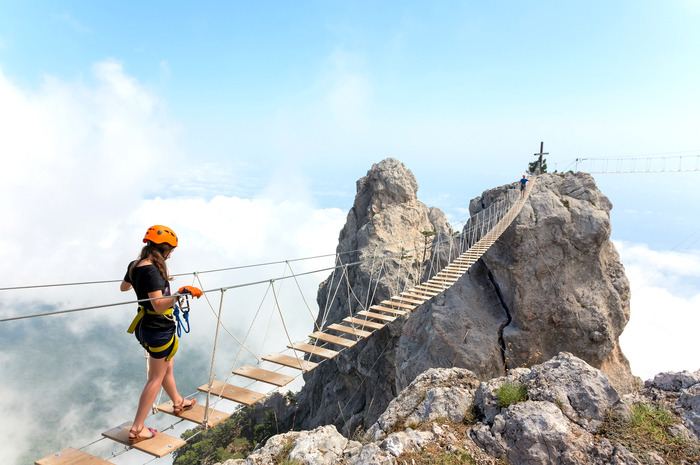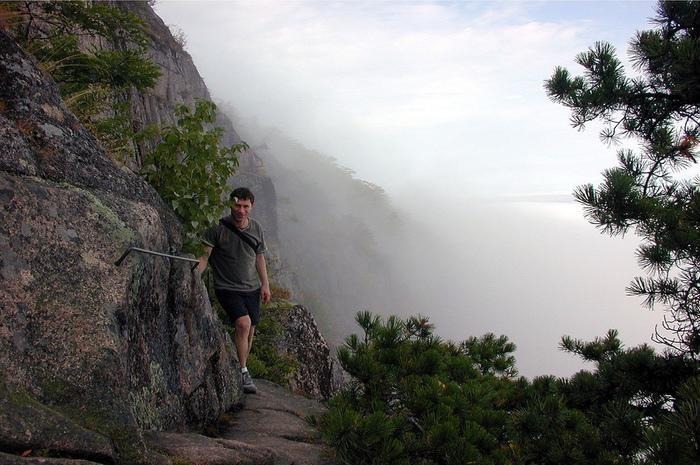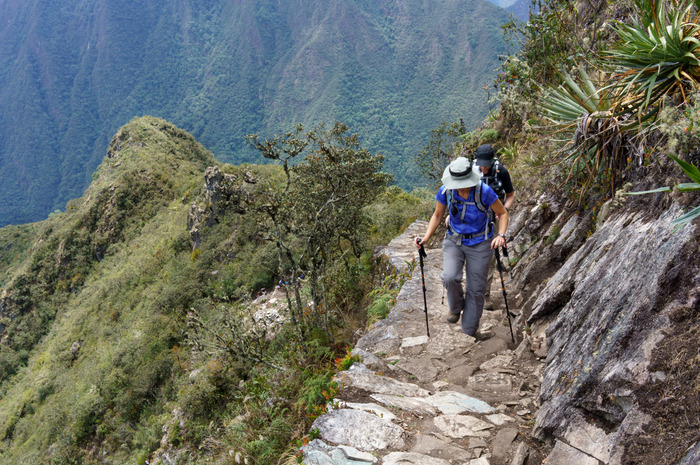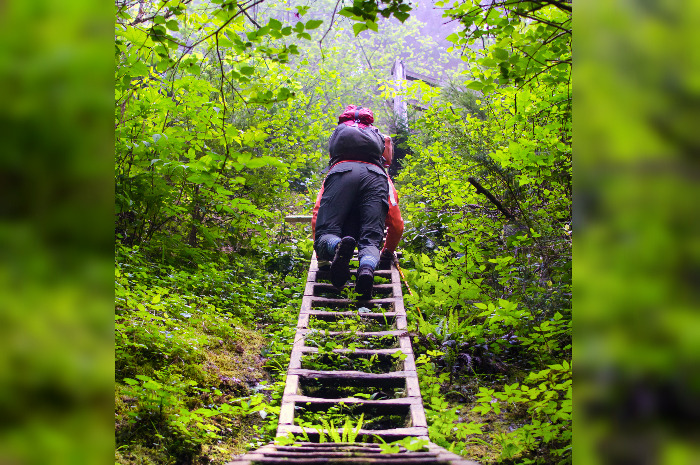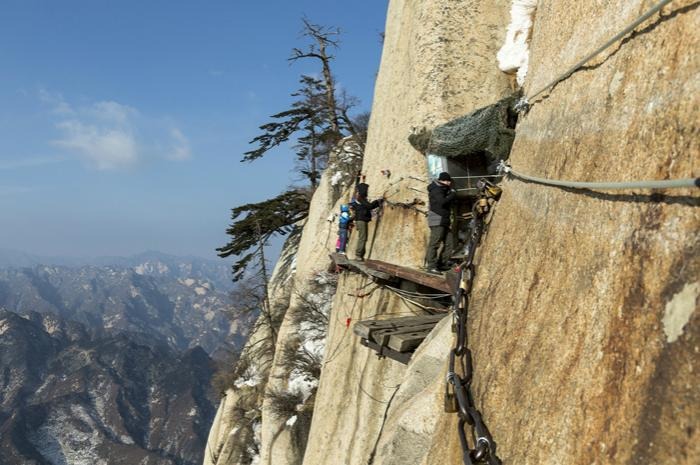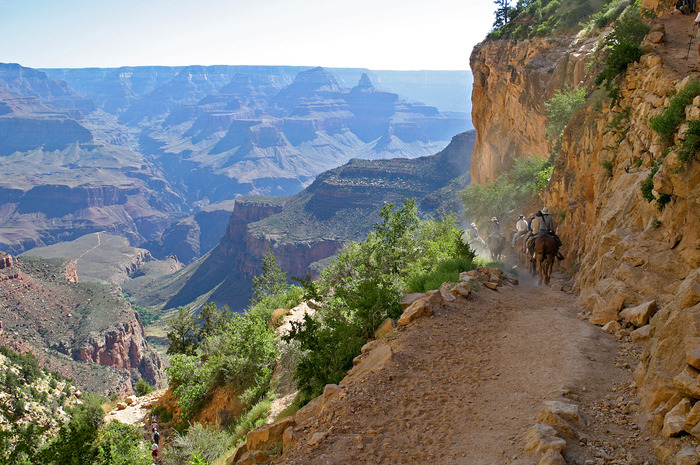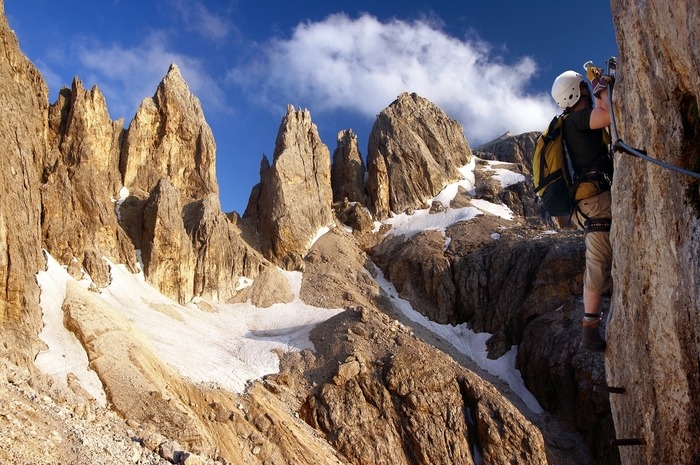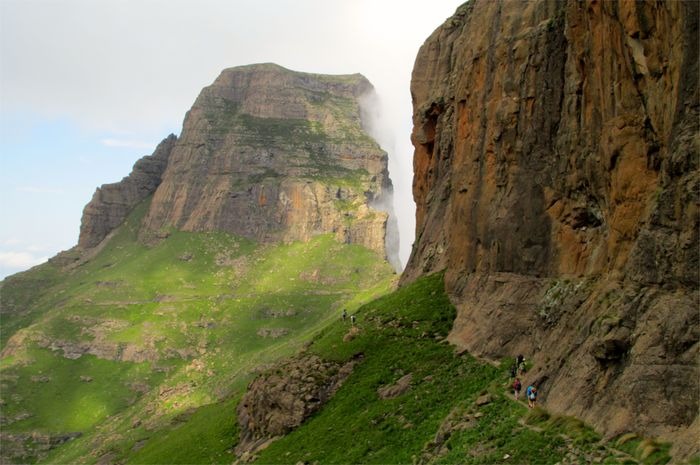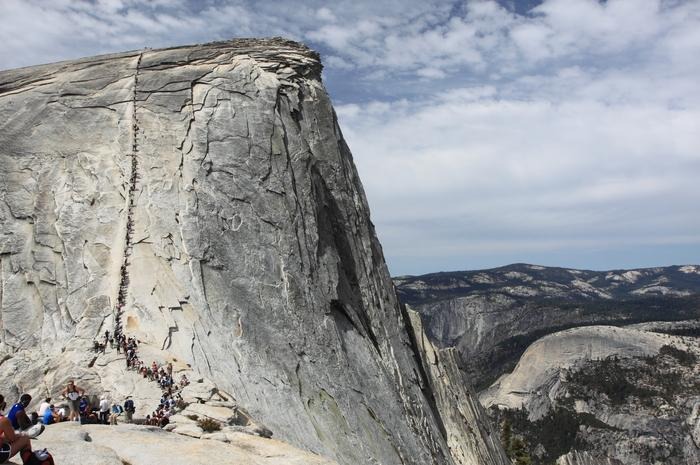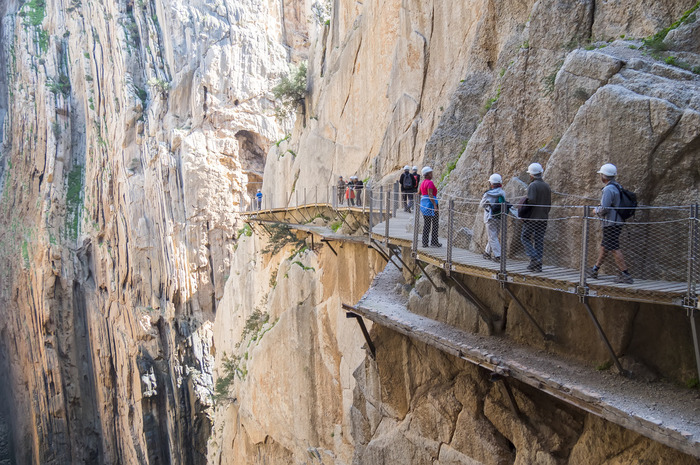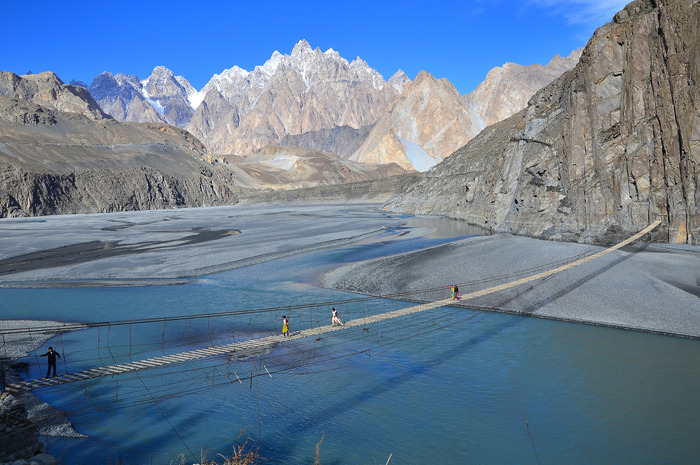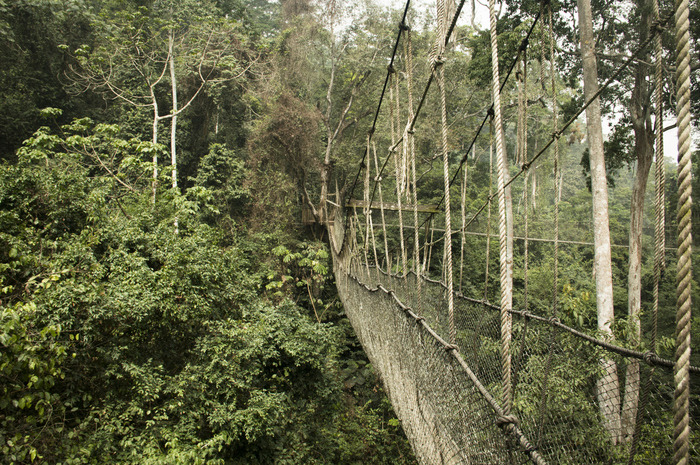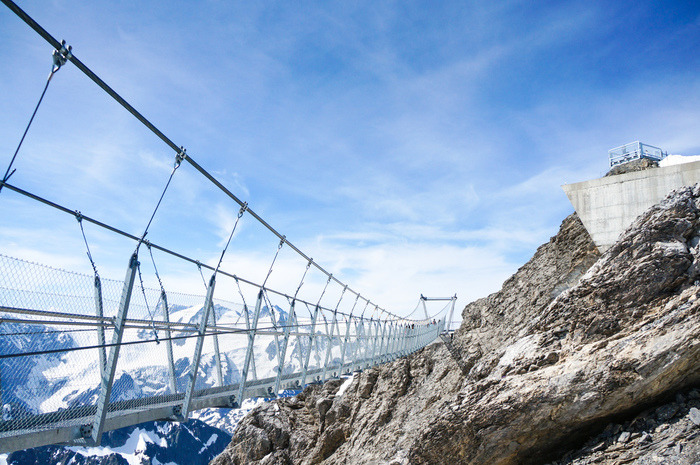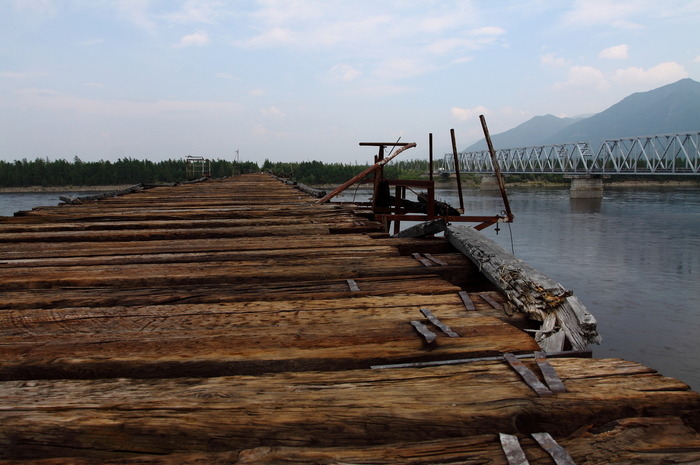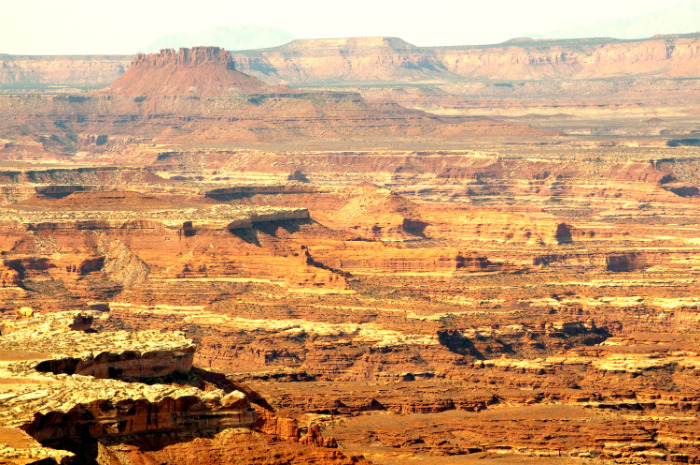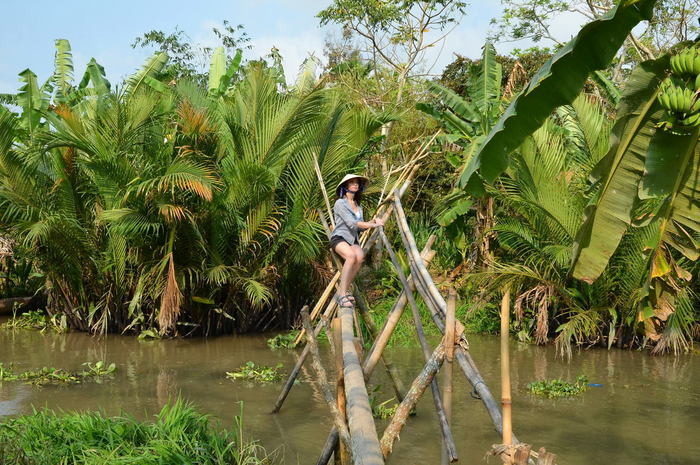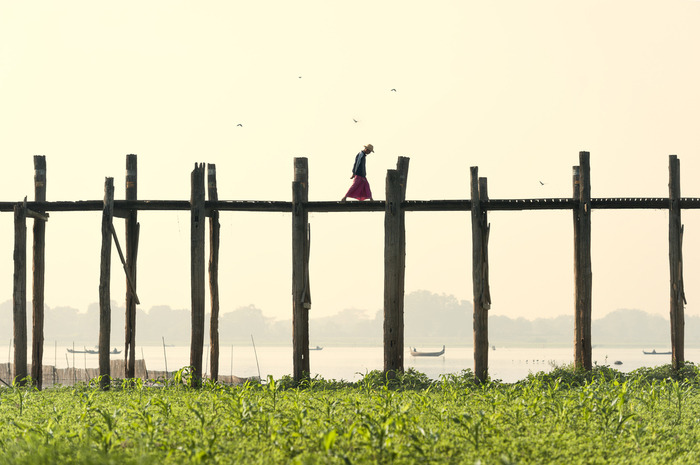Top 17 Most Dangerous Hiking Trails And Bridges
Top 17 Most Dangerous Hiking Trails and Bridges
While hiking and enjoying the stunning beauty of nature is among the best ways to relax and rejuvenate, people must be careful. A total of 1,025 people died in national parks from 2007 to 2013; 145 fatalities in 2014, up from 129 in 2013. The odds are in your favor, but some places are really perilous. One slip can change your life or end it. Perhaps it is the adrenaline rush of being vulnerable that makes dangerous trails and crossing slippery, swinging bridges a popular adventure. It is certainly not a walk in the park – rotten wooden planks, rain, sudden changes in temperature, strong winds and sometimes no trailing put your life at risk.
Precipice Trail, Acadia National Park, Maine
The trail is very popular on the East Coast but it's also one of the most dangerous in Acadia National Park. It's not technically difficult but the steep drops and open cliffs make the walk very tricky. Falls are a real concern. A college student died four years ago after slipping. It's not a surprise that people under 5 feet and 2 inches are not recommended to try the hike. Don't ever take your hands off the metal rungs.
Huayna Picchu Trail, Peru
The Huayna Picchu trek leads to a view point overlooking the Inca citadel of Machu Picchu. The trail loops around the very top of the mountain, where architectural vestiges such as altars, narrow staircases tunnels and terraces can be found, according to The Only Peru Guide. If you are afraid of heights, this trail is not be for you. This is a very a steep hike with some sections that will require the use of both hands and feet to scramble upwards.
West Coast Trail in Vancouver, Canada
Hiking the West Coast Trail guarantees you an encounter with wild animals, especially bears, a walk through narrow gullies, and climbing shaky wooden ladders. The place is so dangerous, it is illegal to stay overnight in the off-season between October 1 and April 30. Technically, though, it can be done. But many expert hikers advise against it. Currents are too strong. Also, you can't just leave the trail. Are you going to swim? There is no easy way out. Winter storms there are dangerous.
Mount Hau Shan in Shaanxi, China
Imagine what is the most challenging hiking experience for you and multiply that by a hundred. This will give you some idea of how dangerous and difficult it is to hike the Mount Hau Shan trail. The highest point is 7,087 feet. The routes to the top are barely walkable because you walk on thin floating boards attached only by nails and giant "staples." You must hold on to cables at all times if don't want to find yourself flying down. The rickety old boards and steep rock face trails have led to many deadly accidents, but recent safety improvements have minimized the risk.
Bright Angel Trail, Grand Canyon, Arizona
It's tempting to want to climb from the rim down the river along the Bright Angel Trail, but you have to consider your realistic ability to complete the hike. It's 4,380 feet in altitude and can get scorching hot. This combination can easily lead do severe dehydration and heat exhaustion. There are about 250 rescue operations a year. One of the better known incidents there was the death of 28-year-old Avik Chakravarty. He climbed in the heat and couldn't handle it. A Preventative Search and Rescue team (PSAR) was created afterwards to help hikers with whatever they may need.
Via Ferrata, Italy and Austria
Instead of using ladders to cross, like people did a few centuries ago, adventurers now use steel cables, ropes, suspension bridges and wooden footpaths. No wonder the route is called Via Ferrata, which means "Iron Street" in Italian. The walkways get extremely icy when it snows. One woman died in 2009 after slipping. She fell 600 feet.
Drakensberg Traverse, South Africa
The Drakensberg Grand Traverse is a 135-150-mile hike across the Drakensberg mountain range, the highest in the country. There is no designed route but there are eight checkpoints that you must pass along the way in order to compete the DGT. They include all major peaks along the way, and are over 9,800 feet. There were 55 hiker deaths recorded in the period before 1985, mostly from falls and exposure, according to Australian Geographic. Deaths are reported every year. One of the worst parts is the beginning – wobbly chain ladders for visitors to use to trek to the ridge.
Mist Trail, Half Dome, Yosemite National Park, California
El Caminito del Rey, Spain
El Caminito del Rey, or the King's Little Pathway, is a narrow walkway set against the walls of a deep gorge that's been called "the most dangerous path in the world." Originally constructed in the early 1900s as a route for hydroelectric power plant workers, the meager trail fell into severe disrepair over the course of the century. By the year 2000, following four fatalities in the previous year, the pathway was closed to the public and was under construction for more than a decade.
Hussaini Hanging Bridge, Pakistan
If somebody was looking at you walking on the bridge, it might look like you were walking on thin clouds unsupported. The Hussaini Hanging Bridge is often referred to as the world's most dangerous one. This perilous rope bridge will have you risk your life with every step. Many of the wooden planks are missing, and the wind, even if it's not very strong, shakes the bridge.
Canopy Walk, Ghana
The Canopy Walk, the only one in the Kakum National Park or any national park in Africa, links several treetops and lets visitors see endangered animals. The swinging bridge is up to 100 feet above the ground. You may feel like you're skywalking and about to flip over. The views of the rainforest, unique monkeys, birds and elephants looking for fallen fruit, are mesmerizing.
Mount Titlis, Switzerland
Set alongside the tallest mountain in the Swiss Alps—Mount Titlis, this incredible bridge is a whopping 1,640 feet up from the ground below. Said to be the highest suspension bridge in all of Europe, the views are absolutely stunning, but crossing is frightening to say the least. "To cross the bridge, you'll need nerves as strong as the steel cables from which it hangs," reads the website.
Vitim River Bridge, Russia
Few people have crossed the bridge. They even set up their own page on Facebook, describing the community to be "for any survivors who have crossed the world's most dangerous bridge ... the Vitim River road bridge, in extreme Siberia." The old train bridge is covered in ice most of the time. It's also not very wide – just about 6 feet – and it has no fence or anything to which to hold on.
Taghia, Morocco
Newsweek called Taghia the Yosemite of North Africa but without the people because it barely gets any visitors. "Climbing and hiking around these places can make you feel alternately fragile and durable, small and big, utterly dominated and chest-swellingly inspired. They can kill you—and they make you feel more alive than you've ever been." The mountains and canyons are very steep and water is rare up high.
The Maze, Utah
If you've watched the movie "127 Hours" with James Franco, then you get the picture. This isolated part of the Canyonlands National Park has been on many lists of extremely dangerous hikes. It's so challenging, it only gets a couple of thousand adventurers a year. The Maze is full of dead-end valleys. Floods and falling rocks are to be expected. Routes into the canyons are cairned, but routes through washes are often unmarked. You're likely to hit a dead end anywhere you turn. The problem is that even if you can get in touch with people to come and rescue you, they may take days to find you.
The Monkey Bridges, Vietnam
The bridges, built by locals and found at many points along the Mekong Delta, are made of a huge bamboo log for your feet and one hand rail. One reason for their name is that when a person walks across the bridge, he or she looks like a "monkey," as seen in this video.
U Bein Bridge, Myanmar
The world's longest teak footbridge gently curves 1,300 yards (0.7 miles) across shallow Taungthaman Lake, creating one of Myanmar's most photographed sites, according to Lonely Planet. In the dry season it feels surreally high and mostly crosses seasonal vegetable gardens. It's about 200 years old. The ageing wood used to be part of the Royal Palace.
